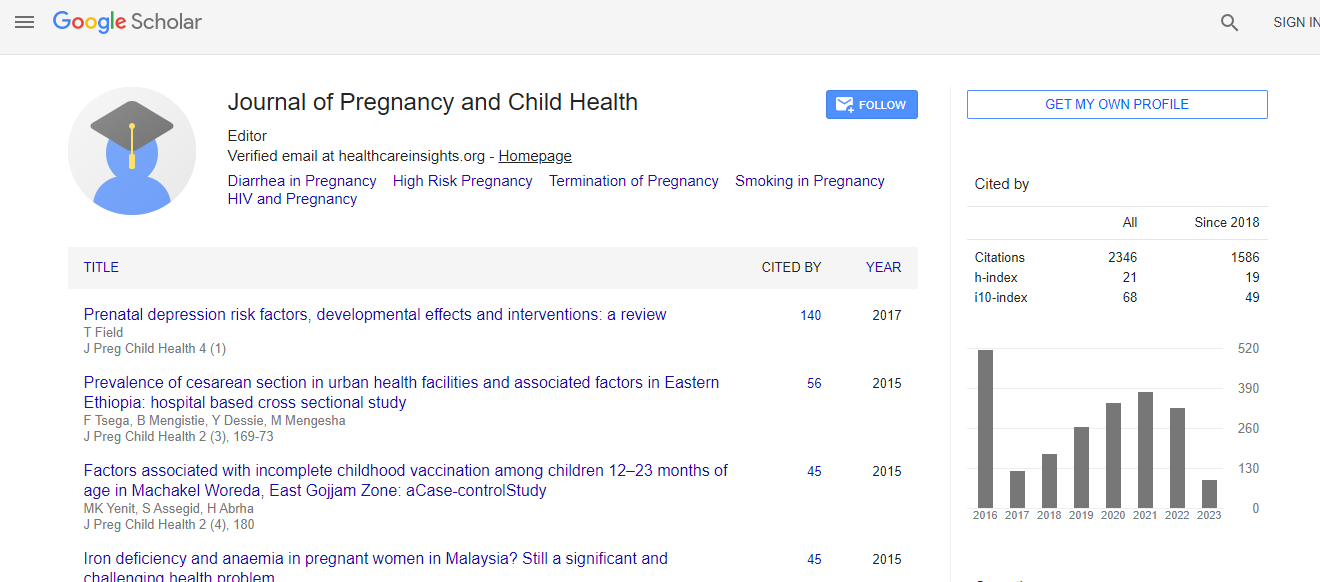Editorial
Anesthetic Neurotoxicity to the Fragile Young Brain: Where Do We Stand?
| Sonia Duarte, Alexandra Saraiva and Humberto S Machado* | |
| Serviço de Anestesiologia, Centro Hospitlar do Porto, Largo Professor Abel Salazar,Porto, Portugal | |
| Corresponding Author : | Humberto S Machado Serviço de Anestesiologia, Centro Hospitlar do Porto Largo Professor Abel Salazar, Porto, Portugal Tel: +351935848475 Fax: +351220900644 E-mail: hjs.machado@gmail.com |
| Received July 07, 2015; Accepted July 08, 2015; Published July 10, 2015 | |
| Citation: Duarte S, Saraiva A, Machado HS (2015) Anesthetic Neurotoxicity to the Fragile Young Brain: Where Do We Stand? J Preg Child Health 2:e121. doi: 10.4172/2376-127X.1000e121 | |
| Copyright: © 2015 Duarte S, et al. This is an open-access article distributed under the terms of the Creative Commons Attribution License, which permits unrestricted use, distribution, and reproduction in any medium, provided the original author and source are credited. | |
Abstract
There is no doubt of the benefits of anesthesia in children which has allowed surgical procedures to be performed in the youngest infants, alleviating of pain, anxiety and maintaining stable vital signs. We also believe that anesthesia has indirectly improved quality of life and in many cases accounted for the saving of many young lives. However, in view of conflicting evidence, it is imperative to invest in future studies, based on scrupulous methodology that can undoubtedly translate the association between anesthesia and adverse neurocognitive outcomes in children. But while more and better-designed studies are being conducted, we have the obligation to be judicious and adopt a protective strategy for our young patients. Although we think there is no evidence to postpone or cancel truly urgent surgeries in young children, it seems to be reasonable that at least on children with less that 6 months, but preferably up to 3 years of age, the decision of proceeding to surgery should count the matter of anesthesia-related neurotoxicity as a possible cost. When necessary, anesthesia and surgery should be kept to the minimum time possible. Also, the avoidance of the agents most implicated, as toxic in animal studies such as ketamine, isoflurane and nitrous oxide seems wise 41, 42. As millions of children can be affected worldwide by this yet to explain possible phenomenon there is urgent need and place for a great deal of translational research so we can finally understand the association between neurotoxicity to the young brain and anesthesia, thus devising mitigating strategies. As Albert Einstein would say, “If you always do what you always did, you will always get what you always got.”

 Spanish
Spanish  Chinese
Chinese  Russian
Russian  German
German  French
French  Japanese
Japanese  Portuguese
Portuguese  Hindi
Hindi 
